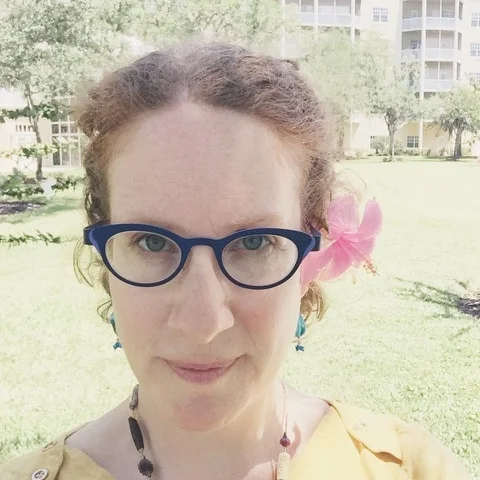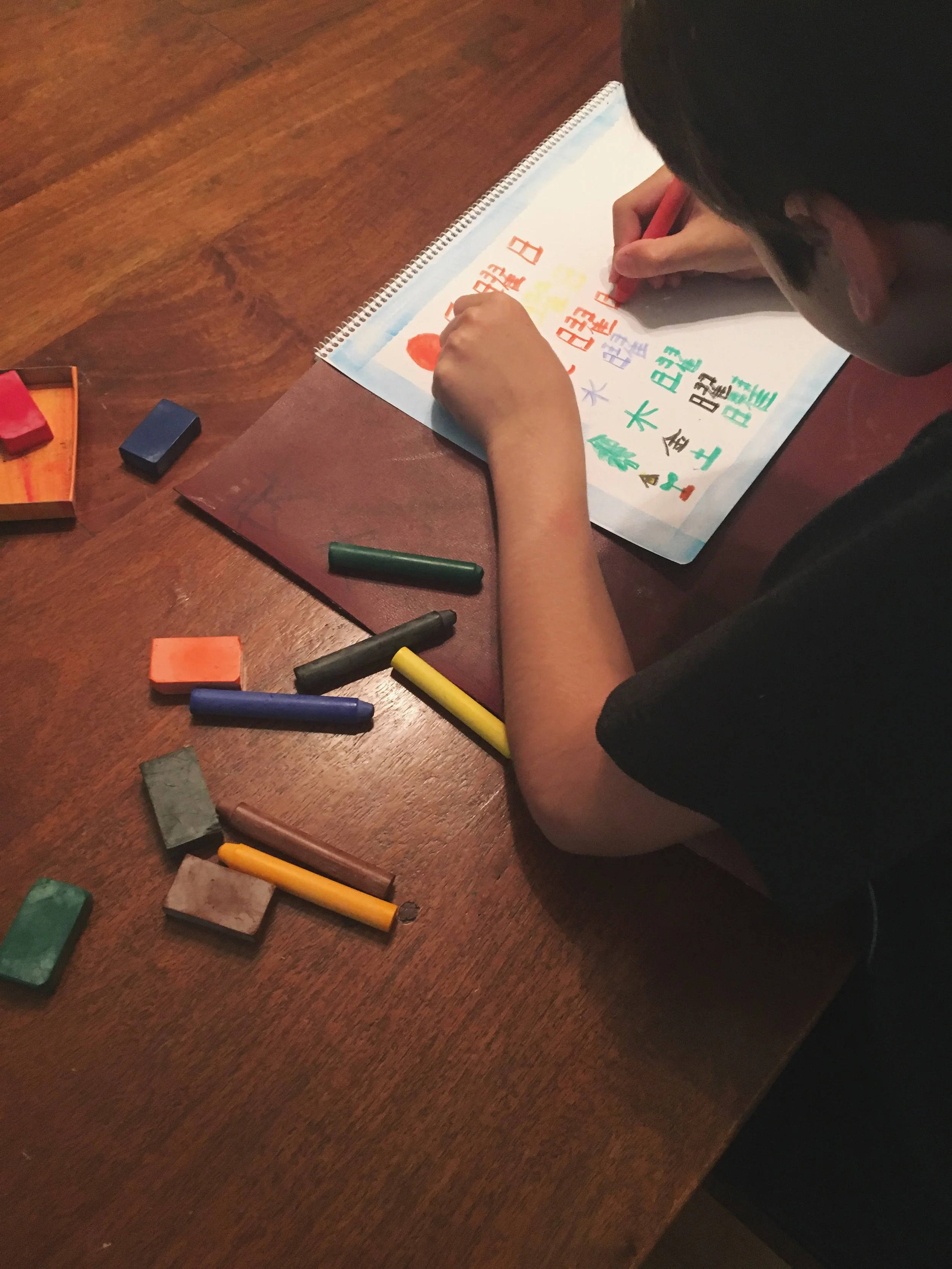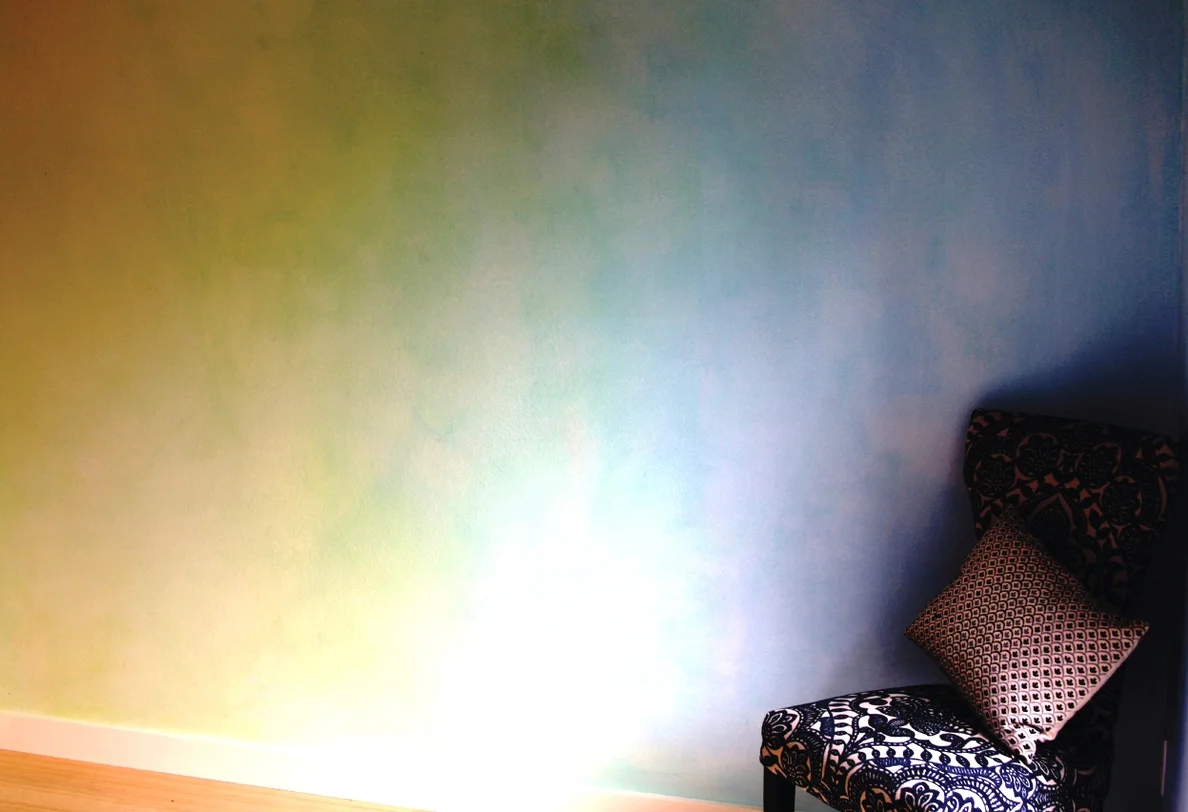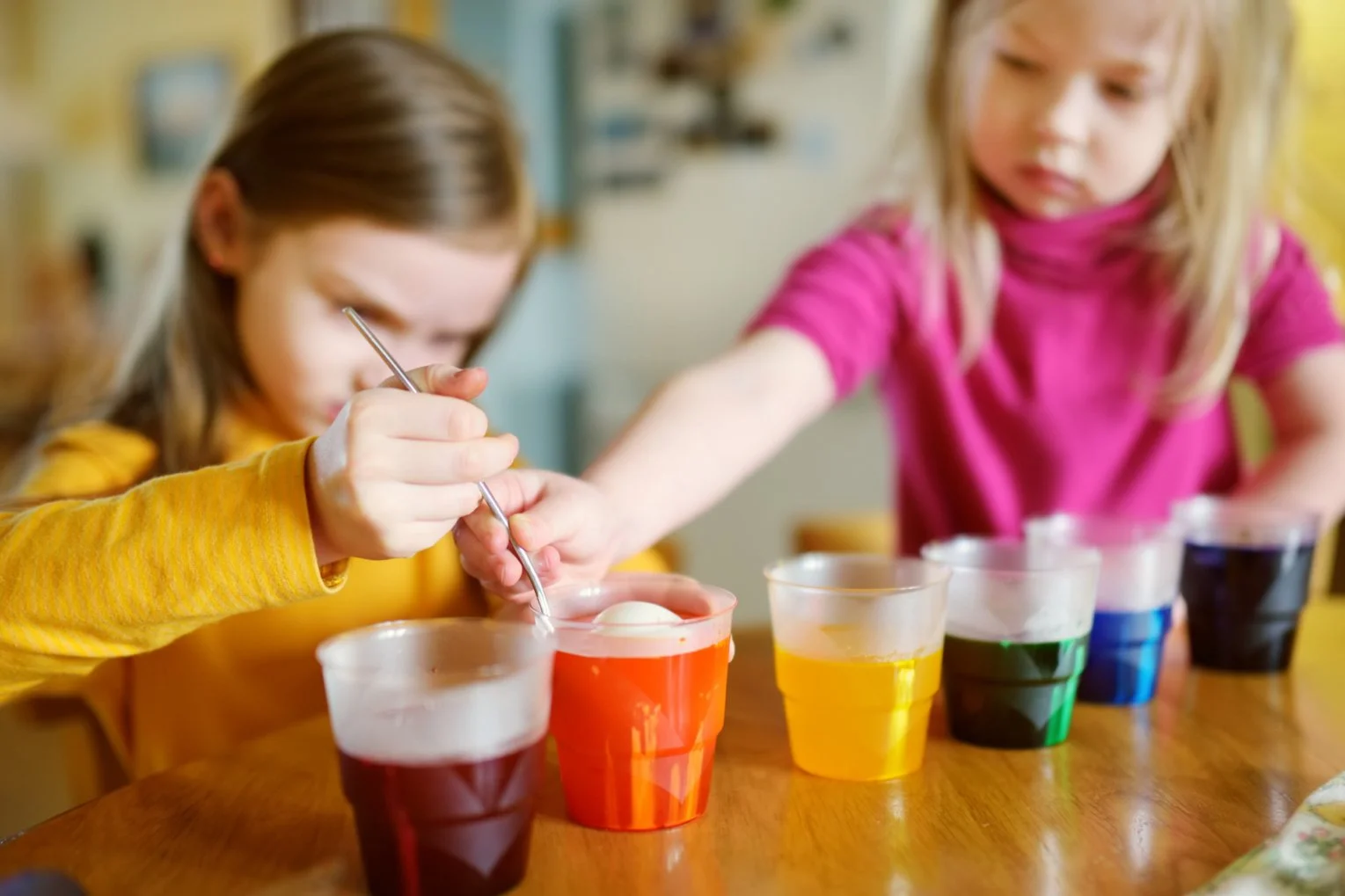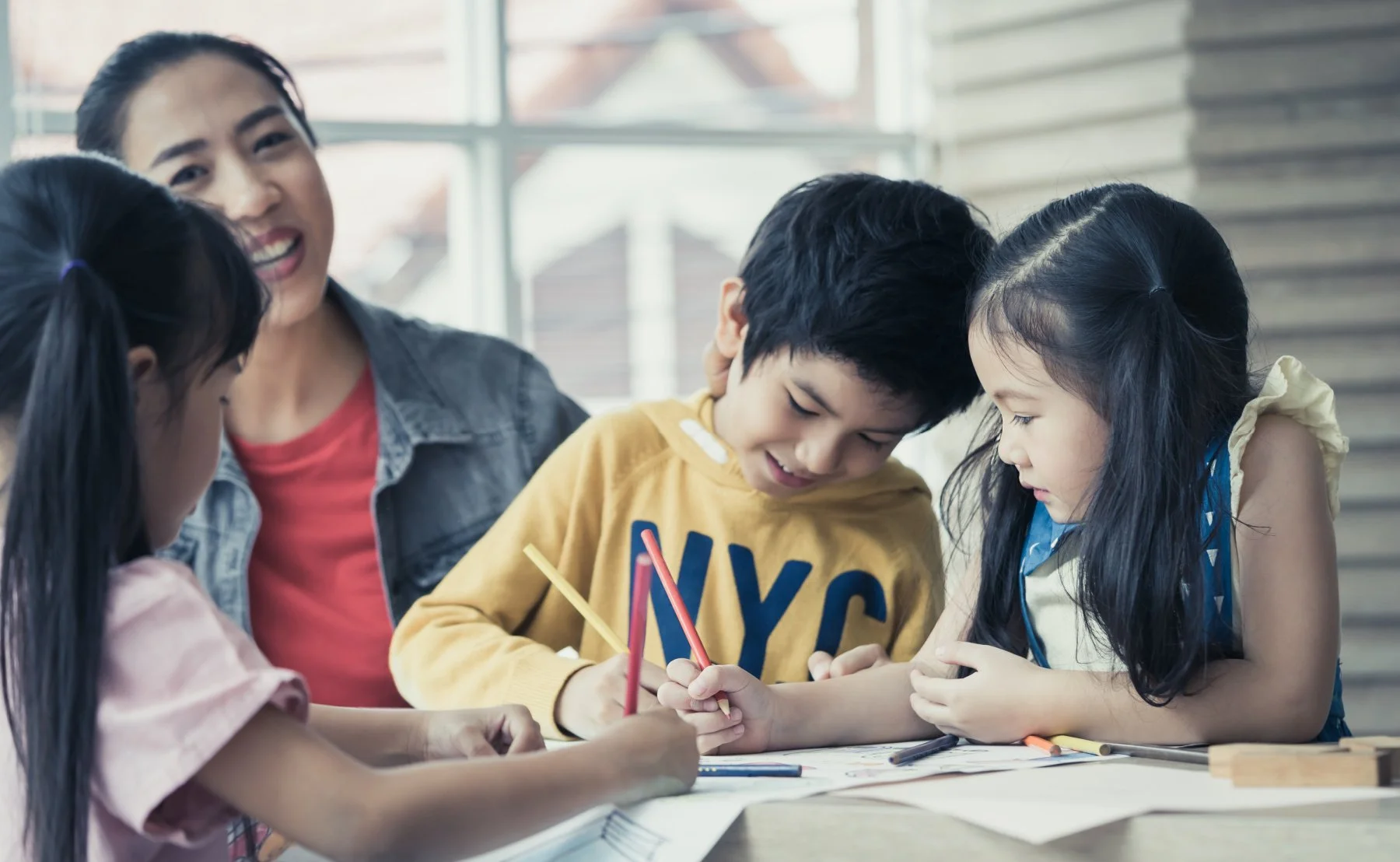
Waldorfish Blog
Why Waldorf Storytelling? (Introducing Sara Renee Logan!)
I was a Waldorf classroom teacher for many years, starting out as a kindergarten assistant, then a subject teacher, and finally taking on four different grades classes, with whom I journeyed for varying lengths of time.
The part of the day I loved best was story time. A hush would fall over the students, and together, we would travel on waves of words, through mysterious forests, over sparkling seas, and under the earth, sometimes passing through towns and schools that looked a lot like our own.
It was similar when my own son was small, and he wanted a story about Boy and Cat and their adventures together each night. We’d sit in the candlelit darkness of his room, and I’d struggle to stay awake as Boy and his talking Cat went on adventures.
Some of the adventures were magical, some as ordinary as a trip to the grocery store, but all were met with equal joy.
Waldorf education relies heavily on storytelling.
From the nursery to the high school, narrative retellings of all kinds of stories lie at the heart of the lesson (for more on storytelling in the Waldorf classroom, click here!). Even in middle school science lessons, we retell the story of the experiment or observation. This week, I want to focus on why storytelling is so important. Next time, I’ll get into how you might get started with storytelling for the children in your life.
So, why? Why can’t we just open a book, or show a movie, or let the children read or observe or tell their own stories. The answer is, “WE CAN!” All of those things are good and worthy ways to learn and to share learning. There is nothing wrong with books, or movies, or going out into the world to see it for yourself. So why the focus on storytelling?
First off, when I say “storytelling,” I specifically mean oral storytelling without a book. Sometimes, it feels like I might as well say, “without a net.” To tell a story from the heart, without words on the page or an image on the screen to fall back on, is to be vulnerable. That vulnerability is an invitation to our listeners to be in relationship with us. The teller needs the listener. My stories about Annika and Her Dresses when I was 8 were fun, but they became even more so when I had a friend who would listen!
The Waldorf curriculum is rich in story, from nature stories and fairy tales, through great myths and legends, to biographies and historical stories. These aren’t the only stories we can tell, though, nor should they be! Sharing stories from our own experience, family memories, and stories we create right in the moment for our children are amazing ways for our children to connect to their own place in the world. As they listen, they are building a treasure trove of stories to pass on to their own children one day, and they are learning to tell their own stories.
Telling stories allows us to make the lesson content into something that is alive. Words on paper are dead; they will not grow or change. They are fixed as they are. This is not me tearing down reading, or being anti-books, but it’s a fact; that’s part of what I love about my favorite books: they are always the same, even when I am changing, and I can meet them in new ways. A story, told aloud, from one person to another or to a group of people, is alive. It can change to meet the needs of the listener. It can be dramatic or calm. The storyteller can draw out the parts of a biography, for instance, that paint the clearest picture of a time in history, or which are the best example of a figure’s character or personality.
With a story, we can make the most daunting material feel approachable, if not familiar and friendly. We might be worried about teaching long division, or medieval law, or the American Civil War, because it feels hard or strange, or overwhelming in scale. By telling a story about dragons sharing pancakes, or a young page who must help his king in a difficult matter, or a family making decisions about whether or not to fight, we can add a drop of humanity, and sometimes even a little levity, to subjects that threaten to feel heavy.
Storytelling demands that we be absolutely present to the story. In this, it is a present, a gift to our listeners. We bring our whole selves into that moment, and together, teller and listeners weave a tapestry of experience. It is a beautiful way for us to connect with our children.
Photo: SRLogan
So, again, why should we tell stories? In short, my deepest answer, the one I get when I stop dancing around the academic benefits and Steiner’s recommendations and so on, is this: Because it is their birthright. Humans tell stories. We tell stories about ourselves, about our homes, about our countries, about our Gods, about our heroes, and about our deepest fears. Children deserve to have access to that magic, to that history, and to themselves. We can offer it to them word by living word, drop by delectable drop. We can offer it to them in the car, cuddled up in bed, on a beach, on a subway platform, over dinner, in a hospital, at the zoo, on an airplane, on a mountain, waiting in line at the grocery store — there is nowhere we cannot share a story, so it is available and accessible. It is their inheritance as story-telling creatures. We owe it to them. We, as adults, owe children not only pre-written, pre-illustrated, pre-digested stories, but new stories, old stories, stories burning like fire on our tongues, and stories flowing like water between us. And if we tell them our stories, we may be lucky enough that they will tell us theirs.
Related content:
Sara Renee Logan has been telling stories to anyone who would listen since she was seven. Many years as a Waldorf teacher allowed her to tell stories about everything from Baba Yaga's hut on chicken legs, to the water cycle, to the life of Joan of Arc. She continues to share her love of storytelling and stories with audiences of all ages, specializing in bringing the wild beauty of folktales to young and old.
Sara has a home on the web at sarareneelogan.com where she shares stories of her life, tips, and ideas for parents and other storytellers. Sara offers coaching services and the Story/Reading process of story-based biography exploration that guides seekers to look deeply into their own life stories through the lens of traditional tales. Sara shares her life with her partner, Melanie, their son, and an unreasonable family of pets.
Find Sara on Instagram @seven_ravens_sara
A Letter To Our Homeschooling Friends.
As you start the school year, you may be feeling like your family doesn’t understand your decision to pursue home education.
Or it may be your friends that are questioning it. Or the school you made the decision to depart from. Some will openly challenge and judge you. Others will do so silently.
You will find that a handful will wholeheartedly trust and support you. (Nurture those relationships, they have great value.)
Keep your eye on the ball. Don’t engage the naysayers. How can any of us know what it's like to walk in another person’s shoes? The only skillful (and soulful) response when people are not supportive is to not take the bait. Practice seeing what’s good in them.
Cultivate faith in yourself. Let go of the rest. There is a lot of work to do.
You will hear it all. That your children won’t know how to socialize. That the kind of socialization they are getting is not enough, or not the right kind. That they will become overly attached to you. That you don’t have enough of “your own thing” going on. That you are depriving them. That they need more activities, or those of a different kind. That they need mean peers and mean teachers to teach them about the world, and to build resilience. That you are not educated enough to educate them. Some criticism will come from people you deeply love and respect, and it will sting. Some will come from complete strangers and you might find yourself laughing at the absurdity of it all.
The list could go on forever. In the short time we have been homeschooling I have developed the following response:
Thank you, but I’ve got this. My husband and I know what's best for our son, we know what's best for our family, and he is not your responsibility. He is ours.
I trust my life and how it unfolds. As a result, I don’t take any of these ultimately well-meaning offerings personally. You don’t have to, either.
Good luck this year.
You’ve got this!
More Than Meets The Eye: The Role of Art in Waldorf Education.
Photo: Cristina Havel
The liberal use of color that infuses all aspects of a Waldorf Education is not only delightful, it’s deliberate.
Beautiful main lesson book entries created by students, beginning in first grade with the heartwarming “One Sun”, increase in complexity throughout the grades. Color, form, technique, and meaning converge to animate all subject matter from math to science, foreign language and native language studies (and for more on art in the classroom, click here!). What is the value of this approach?
“The important thing is to arouse in children a real feeling for life, and color and form have the power to lead right into life...these details are essential to the vitality of the work.” -- Rudolf Steiner, 1922, The Spiritual Ground of Higher Education
Shaping and Perceiving
Artistic endeavors sharpen two very important human skills: the ability to shape, or see, and the ability to perceive, or distinguish. When practiced over time using diverse techniques across a variety of subjects, something very special emerges: the ability to shape and perceive new ways of looking at the world. In 1st grade, “One Sun” might become “one son” -- or “one bun”, as my son said to me, giggling, as I ate a hamburger when he was six. As the Waldorf student develops, connections continue to be made on ever deepening levels and the creative process is strengthened, resulting in students who are able to make connections across a variety of subjects. This skill is highly valued in our culture and is known as interdisciplinary thinking. It’s a truly holistic way of looking at the world and contributing effectively.
I am always doing things I can't do, that's how I get to do them. -- Pablo Picasso
Photo: Robyn Wolfe
The idea that a child cannot succeed in Waldorf Education unless he or she has excellent artistic skills is a myth to be dispelled. One child may draw endlessly in the early grades while another may be adept at origami or painting, or lose herself in handwork. Skills and interests “come in” at different times and under different circumstances. The creative process is sometimes mysterious and always transformative, no matter when and how it reveals itself. There is no wrong way to express oneself artistically. We must teach our children to create without judgement, only then will they be free from inner constraints and available to capture a world in perpetual motion. Therein lies the magic and power of art.
What is Waldorfish Weekly Art?
Waldorfish Weekly Art Foundations is a unique series of online art classes aimed at teaching a variety of methods widely practiced in Waldorf schools around the world. These classes can be used as weekly art classes that are folded into existing homeschool routines of any kind, as refresher courses for brick-and-mortar Waldorf school teachers, and, for those with far-reaching goals with respect to Waldorf homeschooling, as foundation courses that can be applied to different subjects as your student progresses through the grades.
Photo: Cristina Havel
"I’m so pleased to have found art lessons that draw on the Waldorf style as opposed to all of the “outline and color in” art lessons that seem to be popular online. We are really enjoying them!” ~ Heidi
"As a teacher - drawing figures for my chalkboard drawings has always been difficult, and I was rarely happy with the results. Learning how to first draw the gestures and then detailing it. Soooo much easier and successful! I will play more with this one!" ~ Debra
Lazure Basics - by Charles Andrade
We're excited to have Lazure master Charles Andrade joining us on Waldorfish!
We invited Charles to share the basics of this art form. His work is, in a word, stunning.
What is Lazure?
Win Institute Atrium
Lazure is a decorative paint finish using layers of color wash over white walls that allows the light to pass through and reflect back giving a pure color experience that can have a powerful healing influence. Lazure distinguishes itself from other decorative techniques in that it doesn't rely on "visual texture" (ie: ragging, bagging), but instead, on the atmospheric blushing of analogous colors, offering a calming or dynamic movement of color on the walls that changes tones throughout the day.
Lazure painting was initially created by Rudolf Steiner for the performance hall ceilings of the Goetheanum, which is the headquarters of the international Anthroposophical Society, located in Dornach, Switzerland. He developed Lazure as a means to bringing the most luminous quality of color. Years later, after he had created and developed the Waldorf School movement, Steiner instructed the teachers and parents in how to ensoul the walls of the school with Lazure.
(Photos left to right: Baltimore Waldorf School, Westside Waldorf School, Michael Park Waldorf school)
(Photos left to right: meditation room, private residence)
Private residence.
Artist and Lazurist, Charles Andrade has had a life-long fascination with color and painting that has evolved from his initial training in Anthroposophic Art therapy at the Tobias school in England. There, he also learned Lazure, a unique European wall treatment creating healing interior environments. Andrade has owned and operated Lazure Custom Wall Designs for over 25 years – a mural and decorative/faux painting business, specializing in Lazure.
Additionally, he lectures, teaches fine art classes and offers Lazure workshops worldwide.
Try a free art lesson, on us!
Curious about Waldorf-inspired art?
Looking for something?
Welcome to Waldorfish! We started this adventure in 2012 out of a desire to make Waldorf training more accessible to class teachers in remote locations and to homeschooling families everywhere! Read more, click here.
WE WON! Our Weekly Art courses were voted “best interactive art program.” Learn more about the award, here.
A few of our most popular blog posts:







